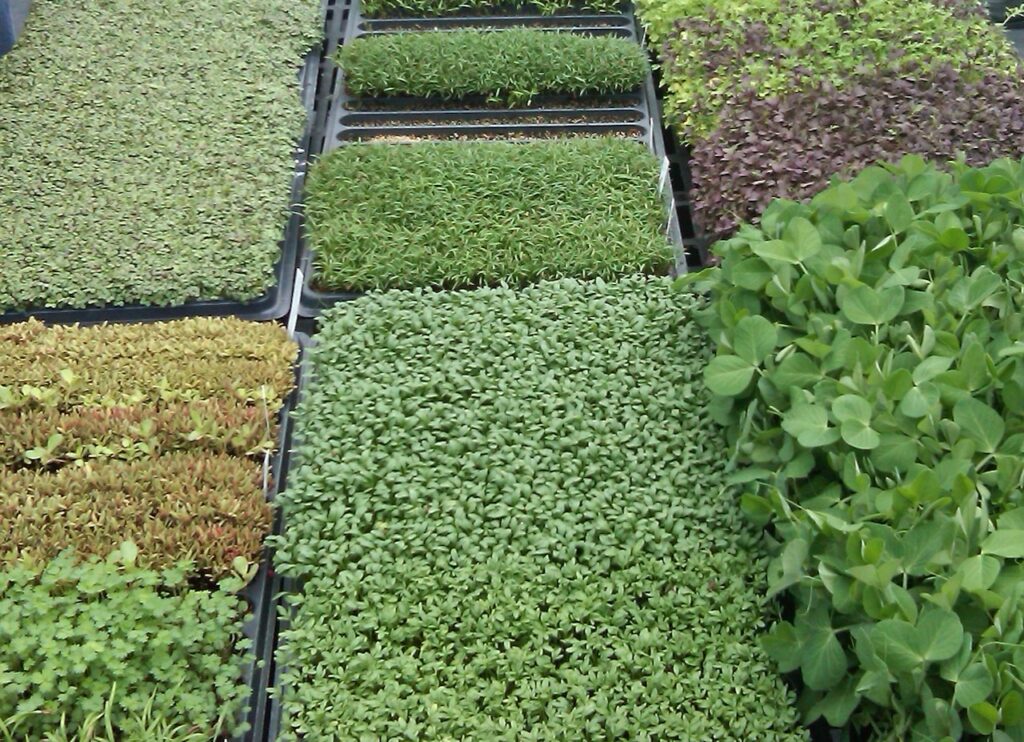When Production Issues Lead to Unexpected Positive Impacts: Focus on Microgreens
go.ncsu.edu/readext?989929
en Español / em Português
El inglés es el idioma de control de esta página. En la medida en que haya algún conflicto entre la traducción al inglés y la traducción, el inglés prevalece.
Al hacer clic en el enlace de traducción se activa un servicio de traducción gratuito para convertir la página al español. Al igual que con cualquier traducción por Internet, la conversión no es sensible al contexto y puede que no traduzca el texto en su significado original. NC State Extension no garantiza la exactitud del texto traducido. Por favor, tenga en cuenta que algunas aplicaciones y/o servicios pueden no funcionar como se espera cuando se traducen.
Português
Inglês é o idioma de controle desta página. Na medida que haja algum conflito entre o texto original em Inglês e a tradução, o Inglês prevalece.
Ao clicar no link de tradução, um serviço gratuito de tradução será ativado para converter a página para o Português. Como em qualquer tradução pela internet, a conversão não é sensivel ao contexto e pode não ocorrer a tradução para o significado orginal. O serviço de Extensão da Carolina do Norte (NC State Extension) não garante a exatidão do texto traduzido. Por favor, observe que algumas funções ou serviços podem não funcionar como esperado após a tradução.
English
English is the controlling language of this page. To the extent there is any conflict between the English text and the translation, English controls.
Clicking on the translation link activates a free translation service to convert the page to Spanish. As with any Internet translation, the conversion is not context-sensitive and may not translate the text to its original meaning. NC State Extension does not guarantee the accuracy of the translated text. Please note that some applications and/or services may not function as expected when translated.
Collapse ▲Speciality crops are inherently unique, and often under-researched when it comes to production information and recommendations. A local microgreen producer began a small business during the pandemic, operating his production through CEA (controlled environment agriculture). Six months into his operation, he developed a disease issue that was dramatically reducing his yield. This further complicated account expansion plans that were already in process.
The Small Farms Extension Agent began assessing the production environment and the overall production situation, utilizing the NC Department of Agriculture, the NC State Plant Disease and Insect Clinic, and area specialists. Pythium was detected, a common but potentially devastating pathogen that can be difficult to eradicate, particularly when conventional products are not in alignment with the production system model. A holistic approach was devised that included a number of integrated pest management protocols. After weeks of careful sanitizing and disinfecting, as well as shifting growing media and the workflow of the production system to minimize disease spread, the pathogen was ultimately controlled.
This unfortunate pest issue led to several positive outcomes: the involvement of Extension connected the producer to important recommendations for food safety, ultimately leading to the grower pursuing GAP certification. This certification has already opened up new lucrative markets, and also connected the grower to existing cost-share programs and resources that will further help sustain this business. Lastly, due to the highly specialized nature of microgreen production, the initial disease problem led to a mutual learning experience, where the microgreen producer was recruited to present his system to a cohort of Extension agents across the state who wanted to learn more about microgreen production on a small scale. Beneficial impacts to the microgreen business, Extension Agent network, and the overall connection of Extension to similar CEA-operations continue to occur.





